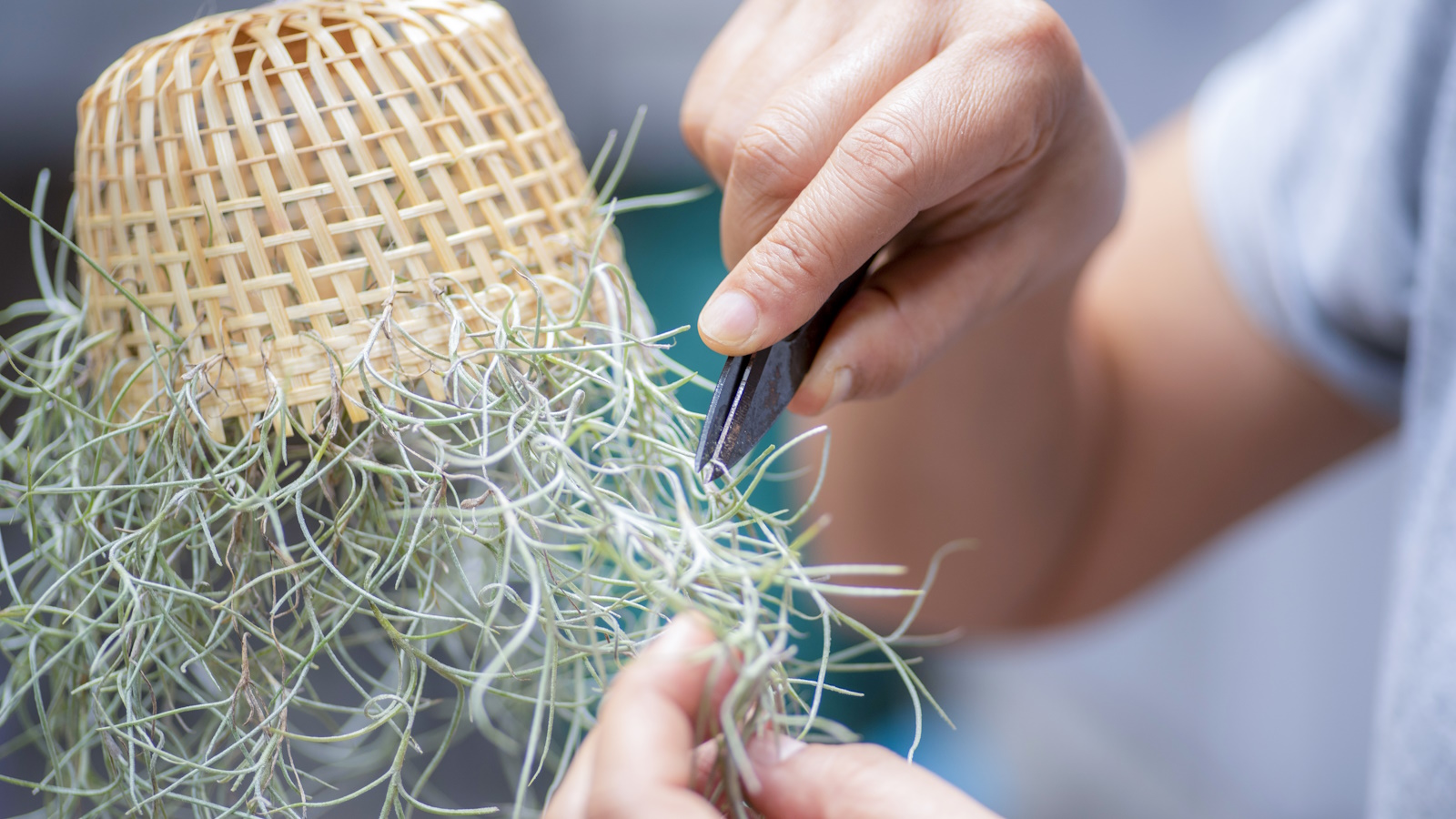
If you are a fan of living sculpture, and having unique structural accents in your home, chances are you'll already have one or more air plants as part of your indoor plant collection.
Although they do not need soil to grow, air plants, or Tillandsia, reproduce much like other houseplants. They grow offsets, which are commonly known as plant pups, and these can be removed to create brand new plants.
Air plants are epiphytes, and use their roots to attach themselves to trees, absorbing moisture and nutrients through their leaves. During a visit to Singapore Gardens Festival last summer, I saw enormous Tillandsia growing in their natural habitat, suspended from high branches and giving an other-worldly effect to indoor gardens. I've been obsessed with their texture and form ever since, and so when I recently found one of my more mature plants had produced two pups I was on a mission to propagate them successfully. Here are the exact steps to follow if you want to learn how to propagate air plants.
Identify the plant pups
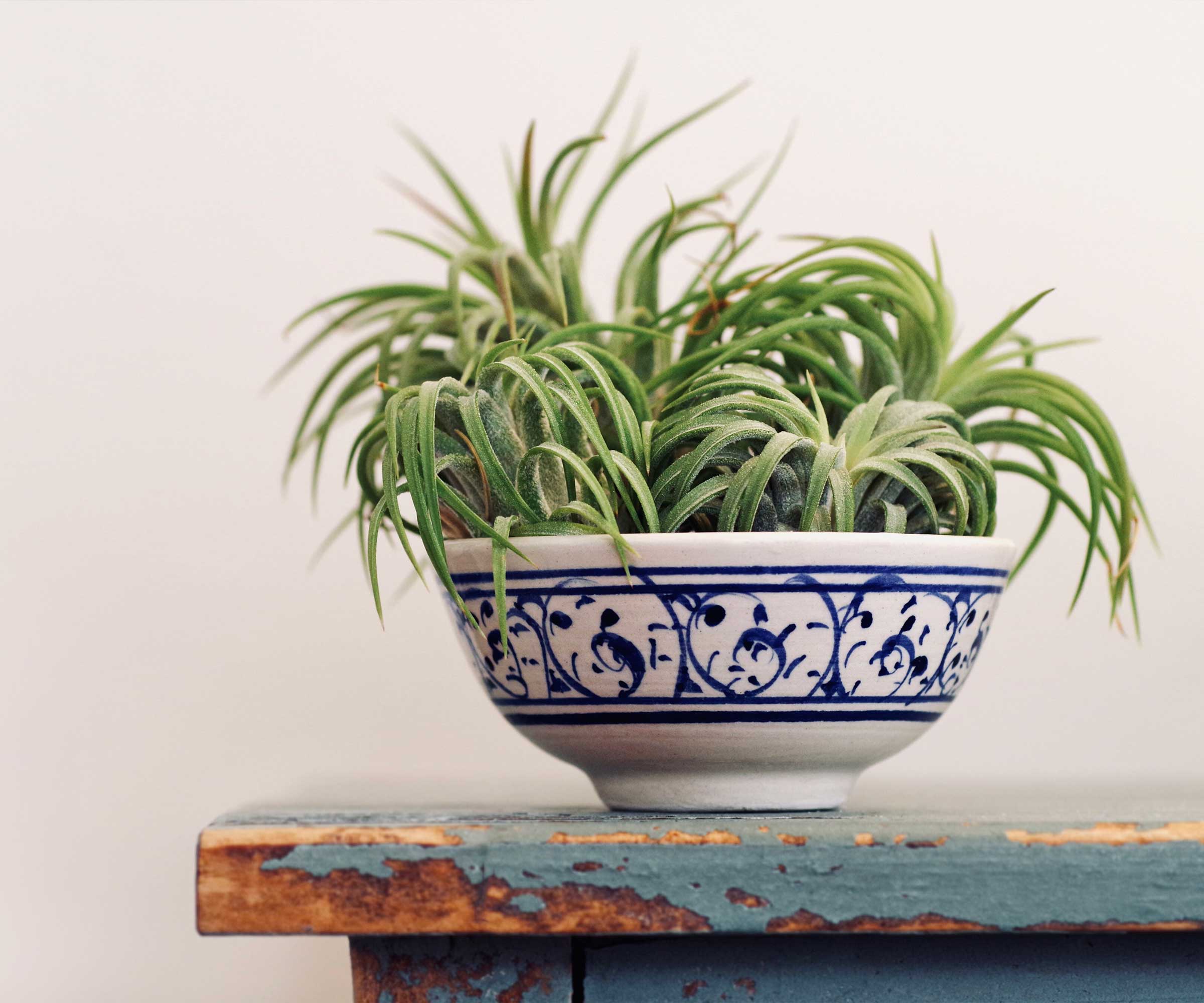
Plant pups are smaller versions of the parent plant, which will eventually develop their own roots. They can grow even if your plant has not been pollinated, so provided your air plant is happy and healthy it is likely you'll get some pups to propagate after a year or so.
To identify them, look around the base of your plant to see if any new babies are growing. It's perfectly fine to leave them with the mother plant, but if you want to grow your collection this is the easiest way to propagate air plants.
To give them the best chance of thriving on their own, the pups ideally need to be a third of the size of the parent plant before you remove them. Detaching them too early would be a houseplant propagation mistake.
Carefully detach pup plants
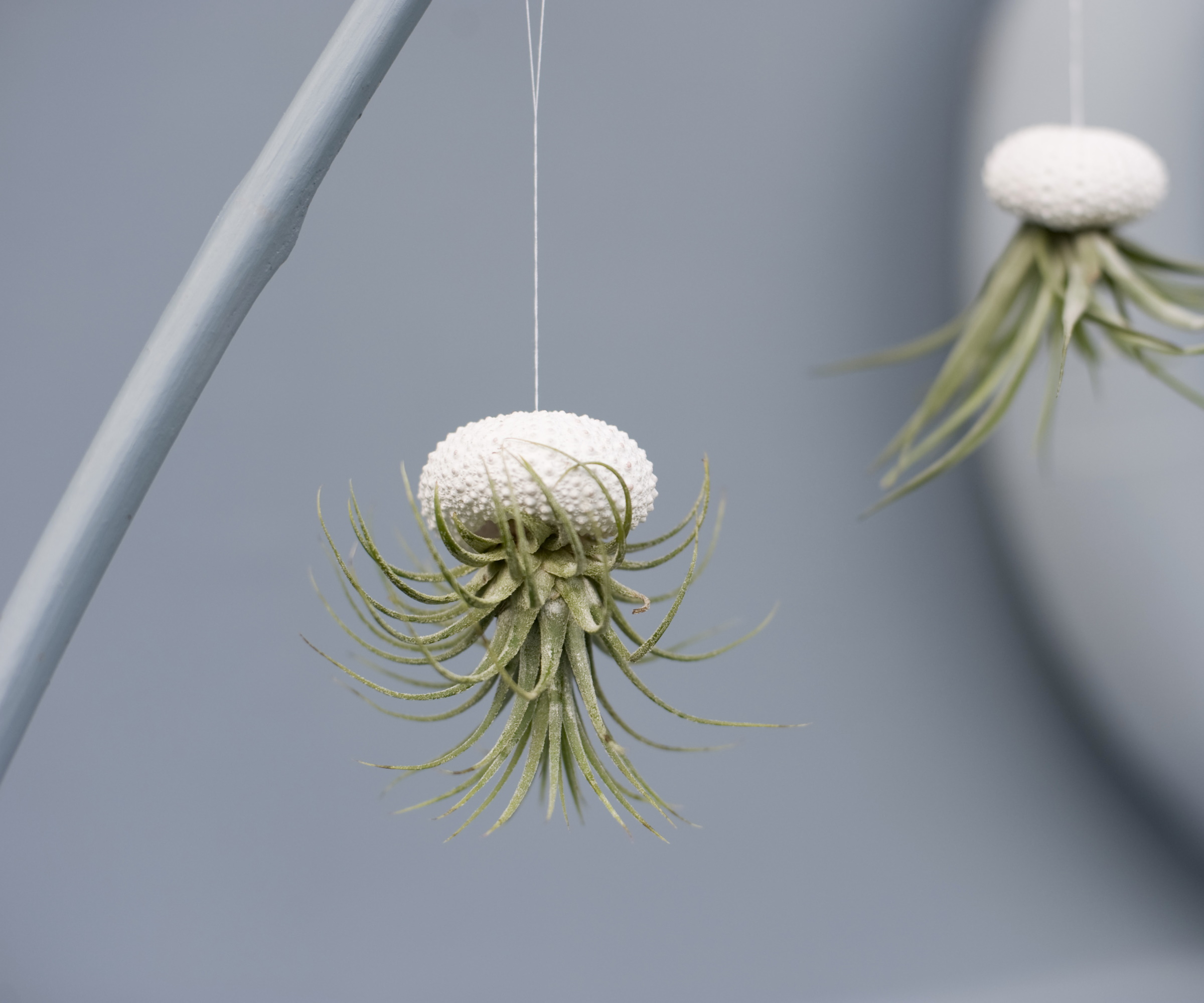
To detach a plant pup, gently twist it until it comes free from the parent plant. Avoid pulling it as this can damage the parent plant. I had to twist mine very slowly from side to side a few times until it detached.
It's best not to cut if you can, however, if the pup has grown quite large, you might need the help of a sharp floristry knife to cleanly cut the younger air plant from the parent - or snips such as this great-value set from Amazon.
Re-home the pups
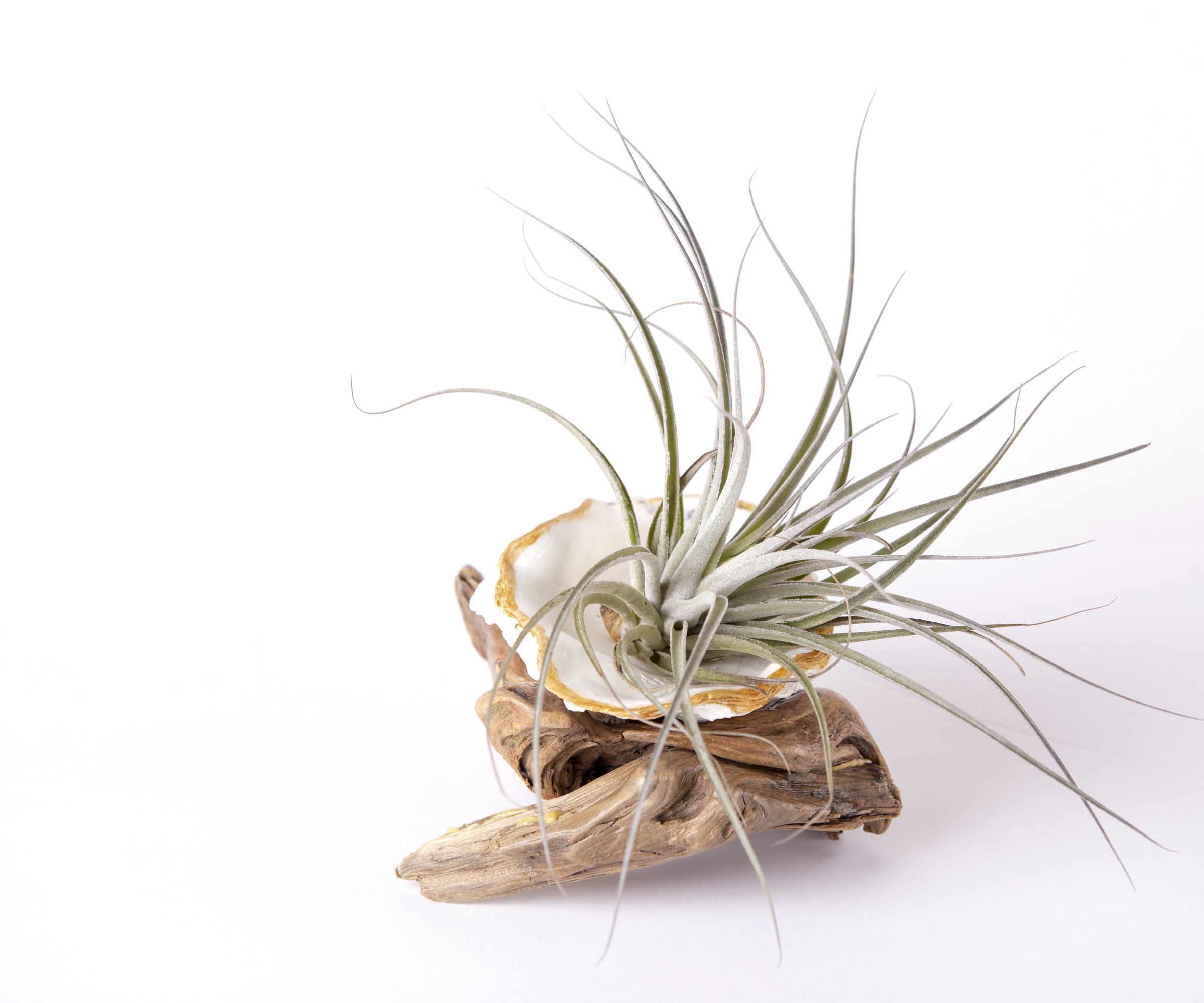
As you know, air plants do not grow in soil and wouldn't be happy being re-potted like many other houseplants.
Instead, find your pup plants a suitable home such as some bark, wood, a shell or terrarium - or you could suspend your pups in a tailor made frame to create a vertical or hanging plant display.
You can use some soft garden twine to hold them in place if required until your pups grow their own roots.
Give them the ideal conditions they need to grow
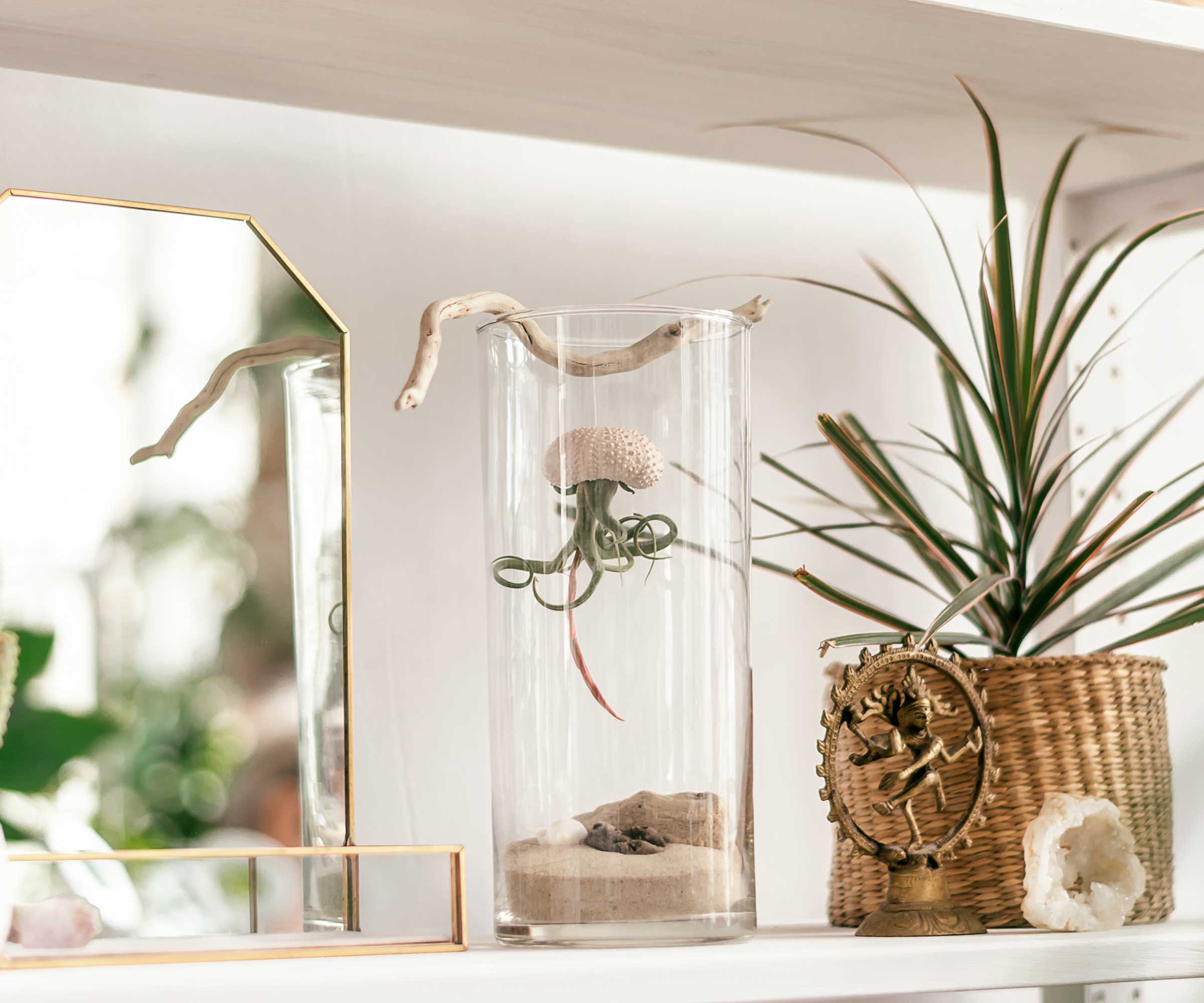
Despite not needing soil to grow, air plants still need sunlight, water and humid conditions to thrive.
Your pups will need at least four hours of bright, indirect sunlight each day. They will also need to be watered once a week - less if they are in a particularly humid room, such as a bathroom.
Their ideal temperature in their natural habitat is anywhere between 50F and 90F, so make sure to keep those pups warm and if possible place in a humid room.
Your air plant propagation kit
These air plant holders are some of the best I've ever found for a stylish, modern way to display air plant pups up high, without risking them falling and potentially damaging their leaves. I would also look to invest in this set if I was giving my newly propagated air plants away as gifts. You could hang them from a ceiling, on a wall or from a cabinet in your home, making them super versatile.
Air plant pups still need to be watered and will enjoy a gentle misting once a week. This mister perfectly fits our H&G heritage style and would look gorgeous displayed on a shelf next to your plant collection. It would also make a thoughtful gift for new plant parents.
To create living wall art using your newly acquired air plants, a frame like this is ideal. I would paint the wood in a bright shade of pink or lilac to really make it stand out in my home. You can attach your plant pups to the grid with twine to make sure they stay in place until they grow roots.
FAQs
Do I need to water an air plant?
Yes - air plants might not need soil to grow but they still need watering. Tillandsia absorb water through their leaves, and so misting or gently spraying your plant is a good way to water an air plant. Keep an eye on your plant's leaves; if they start to curl more than normal or turn brown it may need hydrating a little more. If your air plant has shiny, waxy leaves, we would also recommend soaking it every two weeks in a container of water for around 15 minutes, to allow it to drink steadily. Always shake any excess water from your plant afterwards and allow it to dry to avoid potential root rot.
There are many different types of air plant, meaning it can be tricky sometimes to determine how much water they need - as some are much more drought tolerant than others. Our guide to the best types of air plant will come in handy and hopefully help you identify which variety you have.







